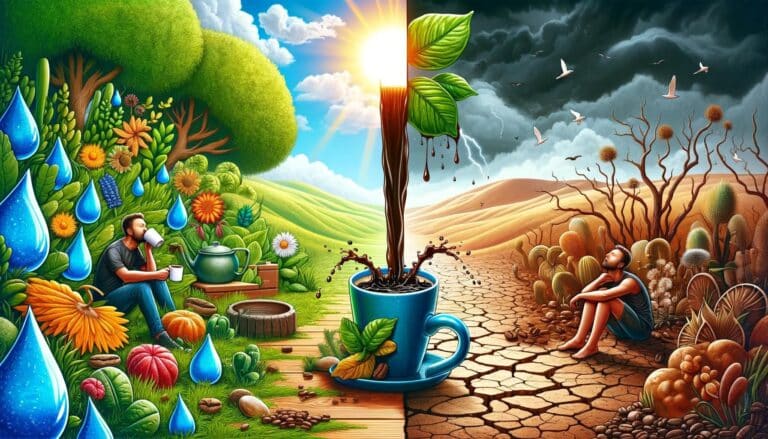People all over the world love coffee, enjoying its strong smell and refreshing taste that goes beyond different cultures and places. The story of coffee goes way back, full of myths about how we found it and how its farming spread everywhere. Nowadays, coffee isn’t just a drink; it’s a huge part of our culture. It’s key to many people’s daily routines, from busy city cafes to quiet coffee ceremonies in Ethiopia. Coffee’s impact is huge, touching every part of society, boosting economies, sparking conversations, and kicking off many people’s days.
Even though everyone knows the term “coffee bean” and the image of the small, dark, shiny bean is famous worldwide, there’s a big misunderstanding. The truth is, calling it a bean isn’t quite right. This article will clear up this confusion by looking into what a coffee “bean” really is, from a scientific point of view, and why it might not actually be a bean. As we dive into the history, how we make coffee, and what it means to people, we encourage our readers to think differently about what they know of this vital part of daily life and to see the deep story and complexity behind every cup of coffee.
Is Coffee Really a Bean?
Coffee beans are actually the seeds of the coffee cherry, a type of stone fruit, and not true beans. They get their misleading name due to their resemblance to legumes. These seeds are processed through drying and roasting to produce the coffee we drink, with the roasting giving coffee its unique flavor and aroma.
What is Coffee?
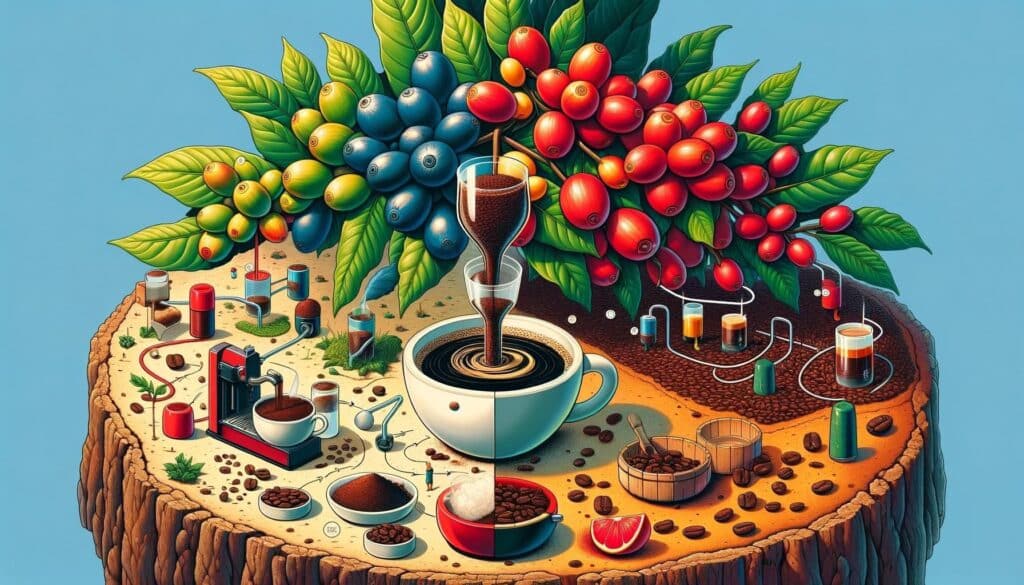
Definition and Origin of Coffee
People make coffee by brewing roasted seeds called “beans” from the Coffea plant. This plant comes from tropical Africa, places like Ethiopia and Sudan, but now it grows in more than 70 countries around the equator, like in the Americas, Southeast Asia, the Indian subcontinent, and Africa again. The Coffea plant makes a drink that wakes you up and tastes good because it has caffeine and lots of other stuff that gives it a unique flavor and smell.
The Story of How We Found Coffee
There’s a cool story from the 9th century about a guy named Kaldi from Ethiopia. He had goats, and one day, he saw that after they ate some red berries from a plant, they got super energetic. Monks from a nearby place made a drink from these berries and noticed it helped them stay awake for their long prayers. And that’s how coffee started to travel the world.
How Coffee Spread Around
First, people started growing and trading coffee on the Arabian Peninsula. By the 1500s, places like Yemen were big on coffee, and soon after, it reached Persia, Egypt, Syria, and Turkey. Coffeehouses popped up in the Middle East, becoming spots where people hung out to chat, enjoy music, and talk about big ideas.
In the 1600s, coffee landed in Europe. Even though not everyone liked it at first, it got popular, and coffeehouses opened up. These places in London were so cool for learning and sharing ideas that people called them “penny universities.”
Then, coffee plants started growing in places like the East Indies and the Americas, which changed the economy and even the slave trade. The Dutch, French, Spanish, and Portuguese all helped spread coffee growing to new areas, including Brazil, which turned into the biggest coffee producer by the 1800s.
Now, coffee is something people all over the world love. It’s part of many cultures and everyday life. The story of coffee is full of adventures, trade, and new ideas, showing how our tastes, economies, and social habits have changed over time.
The Coffee “Bean”: A Misnomer?

What Constitutes a Bean Botanically
In botanical terms, a bean is the seed of one of several genera of the flowering plant family Fabaceae, which are used for human or animal food. These beans are characterized by their growth in pods, which house multiple beans inside. Beans are a type of legume, a group of plants that have nitrogen-fixing bacteria in structures called root nodules. Common examples of true beans include kidney beans, black beans, and pinto beans. These plants are quite different from the coffee plant both in terms of their botanical characteristics and the environment in which they grow.
Detailed Description of the Coffee Cherry and the Coffee Seed
The coffee “bean” is actually the seed of the coffee cherry, a fruit produced by the Coffea plant. These cherries are small, round, and typically red or purple when ripe. Each cherry generally contains two seeds nestled face to face, surrounded by a sweet and mucilaginous pulp. On occasion, a cherry will contain only one seed, resulting in what is known as a “peaberry,” which is smaller and rounder than standard coffee seeds.
The structure of a coffee cherry can be broken down into several layers from the outside in: the outer skin or exocarp, the pulp or mesocarp, a slimy layer called the mucilage or parenchyma, the parchment or endocarp (a papery husk around the seed), the silver skin or tegument (a thin membrane covering the seed), and finally, the seed itself.
The Process from Coffee Cherry to Coffee “Bean”
The journey of a coffee cherry to become the coffee “bean” we are familiar with involves several steps:
- Harvesting: Coffee cherries are typically hand-picked to ensure ripeness, though mechanical harvesting is also used in some regions. The goal is to harvest the cherries at peak ripeness for the best flavor.
- Processing: Once harvested, the cherries undergo processing to remove the outer fruit layers and expose the seeds. There are two primary methods of processing:
- Wet processing (washed coffee): Involves removing the outer skin and pulp of the cherry through fermentation and washing. This method is known for producing coffee with a cleaner, brighter flavor.
- Dry processing (natural coffee): The entire cherry is left to dry in the sun before the dried outer layers are mechanically removed. This method often results in a sweeter, more complex flavor profile.
- Drying: After processing, the coffee seeds, still encased in their parchment, are dried to a moisture content of about 11%. This can be done in the sun or with mechanical dryers.
- Milling: The dried seeds are then hulled, polished, and graded. Hulling removes the parchment layer, polishing is optional and removes any remaining silver skin, and grading sorts the beans by size and weight.
- Roasting: The final transformation occurs during roasting, where green coffee seeds turn into the aromatic, brown beans familiar to consumers. Roasting is a crucial step that develops the coffee’s flavor and aroma profile through complex chemical reactions.
The term “coffee bean” is thus a reference to the appearance and shape of the coffee seed after processing and roasting, rather than an accurate botanical classification. The misconception likely persists due to the seed’s resemblance to true beans and the general unfamiliarity with the coffee plant’s fruit-bearing nature.
The Botanical Perspective

Classification of the Coffee Plant within the Plant Kingdom
The coffee plant belongs to the genus Coffea, within the family Rubiaceae. This family is part of the order Gentianales, a large group within the dicotyledons, one of the two main groups of flowering plants. The Rubiaceae family is diverse, containing around 13,500 species spread across more than 600 genera, including not only coffee but also gardenia plants and cinchona trees (from which quinine, an antimalarial drug, is derived).
Coffea species, most notably Coffea arabica (Arabica coffee) and Coffea canephora (Robusta coffee), are the primary sources of the world’s coffee consumption. These species are evergreen shrubs or small trees that thrive in tropical climates around the world, particularly in areas with abundant rainfall, warm temperatures, and no frost.
Differences Between Legumes (True Beans) and Coffee Seeds
Legumes and coffee seeds differ significantly in their botanical characteristics and the roles they play within their respective plant families:
- Botanical Structure: True beans are the seeds of plants in the family Fabaceae (legume family). They grow in pods that open along a seam when the beans are mature. The legume family is characterized by its ability to fix nitrogen in the soil, thanks to a symbiotic relationship with bacteria housed in root nodules. This trait is absent in the coffee plant, which does not produce nitrogen-fixing nodules or grow in pods.
- Growth Habit: Legumes encompass a wide range of growth habits, including vines, shrubs, and trees, and have a variety of uses, from food crops (like peas and lentils) to cover crops for soil improvement. Coffee plants, on the other hand, are primarily cultivated for the seeds within their cherries and are grown as shrubs or small trees.
- Reproductive Strategy: Both legumes and coffee plants produce flowers that develop into fruit. However, the fruits’ structures are markedly different, with legumes producing a pod that splits open and coffee plants producing a cherry that does not split open naturally.
The Role of Seeds in Plant Reproduction and How Coffee Fits into This Category
Seeds play a crucial role in plant reproduction by facilitating the dispersal of genetic material from the parent plant to new locations where the seeds can germinate and grow. In the case of legumes, the pod’s opening allows the seeds to disperse into the environment. For coffee plants, the seeds (coffee cherries) are often dispersed by animals that eat the fruit and excrete the seeds elsewhere, though this natural dispersal method is largely bypassed in commercial coffee cultivation in favor of direct human planting and cultivation.
Coffee seeds fit into the broader category of plant reproduction through their role as the reproductive unit that, once separated from the fruit and planted, can germinate and grow into a new coffee plant. The process of seed formation, maturation, and germination is similar across the plant kingdom, involving pollination, fertilization, and seed development. However, the specifics of how seeds are dispersed and the environmental conditions favorable for germination vary widely among species, including between coffee plants and legumes.
The Journey of Coffee: From Seed to Cup
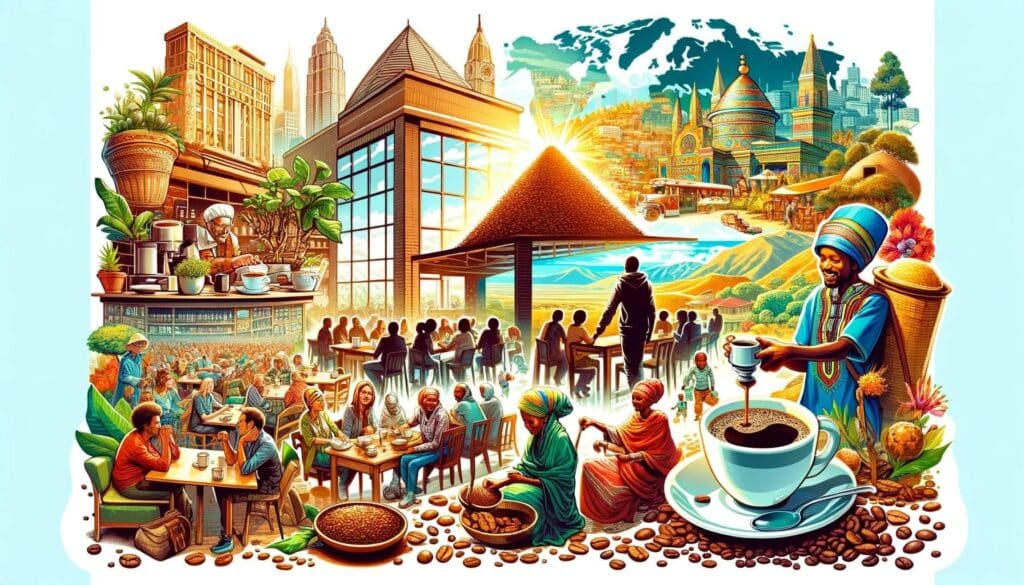
The transformation of coffee from a seed to the beloved beverage enjoyed worldwide is a complex process involving numerous steps, each critical to developing the coffee’s unique flavor profile. This journey from seed to cup can be broadly categorized into several stages: cultivation, harvesting, processing, drying, milling, exporting, roasting, and finally, brewing.
Overview of the Coffee Production Process
Cultivation: Coffee plants are typically grown in large plantations or smallholder farms in countries around the equatorial belt. The two most commonly cultivated species are Coffea arabica (Arabica coffee) and Coffea canephora (Robusta coffee), with Arabica being more prevalent and prized for its smoother, more nuanced flavors. Coffee plants require specific climatic conditions to thrive, including moderate sunshine and rain, steady temperatures, and rich soil.
Harvesting: Coffee cherries are harvested either by hand or mechanically, depending on the terrain and the plantation’s size. Hand-picking is labor-intensive but allows for selective harvesting, where only ripe cherries are picked. This method is preferred for high-quality Arabica beans. Mechanical harvesting is faster but less selective and is more common in large, flat plantations where Robusta is grown.
Harvesting and Processing Methods
Wet Processing (Washed Coffee):
- Pulping: The outer skin and some of the pulp are removed from the cherry using a pulping machine.
- Fermentation: The remaining mucilage (pulp) on the beans is broken down by fermenting the beans in water for 24 to 48 hours.
- Washing: The beans are then washed to remove the mucilage.
- Drying: Finally, the beans are dried to approximately 11% moisture content, either in the sun on drying beds or using mechanical dryers.
Dry Processing (Natural Coffee):
- Drying: The whole cherries are spread out in the sun to dry, a process that can take several weeks.
- Turning: The cherries are regularly turned to ensure even drying.
- Hulling: Once dried, the dried skin, pulp, and parchment are removed to reveal the green coffee bean.
Roasting Process and Its Impact on Flavor Profiles
Roasting:
- The green coffee beans are roasted at temperatures ranging from 180 to 240°C (356 to 464°F). The roasting process is crucial in developing the coffee’s flavor, color, and aroma.
- During roasting, complex chemical reactions occur, including the Maillard reaction and caramelization, which develop the beans’ characteristic flavors and aromas.
- The duration and temperature of the roast affect the coffee’s flavor profile: light roasts preserve more of the bean’s original characteristics, medium roasts create a balanced flavor, and dark roasts offer a bolder, more intense taste.
Impact on Flavor Profiles:
- Light Roasts: Highlight the coffee’s acidity and retain most of the original flavors of the bean, which can range from fruity to floral depending on the origin.
- Medium Roasts: Offer a more balanced flavor, acidity, and aroma, with a fuller body compared to light roasts.
- Dark Roasts: Feature a pronounced bitterness with lower acidity, showcasing flavors of chocolate, caramel, and smokiness.
The journey from seed to cup is a testament to the care and attention that goes into every step of the coffee production process. Each stage, from harvesting to roasting, plays a pivotal role in shaping the final flavor profile of the coffee, making it a truly artisanal product enjoyed by people around the world.
Why Do We Call It a Bean?
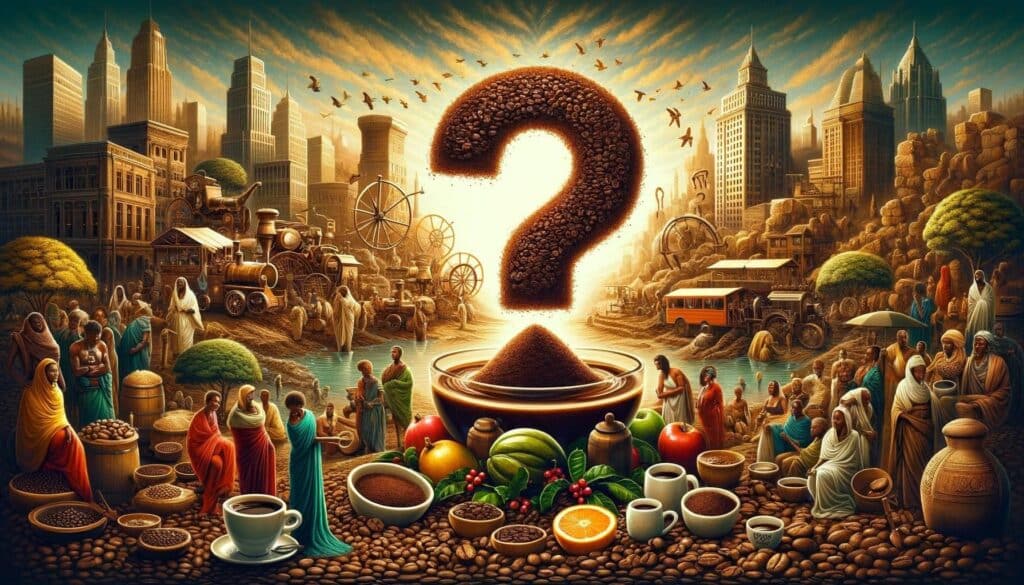
The term “coffee bean” is deeply ingrained in the global lexicon of coffee culture, yet its origins and the reasons for its widespread acceptance are as rich and complex as the beverage itself. Understanding why we refer to coffee seeds as beans requires delving into historical context, linguistic traditions, and the influence of marketing and global trade.
Historical Context of the Term “Coffee Bean”
The history of the term “coffee bean” dates back to the early coffee trade and its introduction to new cultures and societies. As coffee spread from its origins in Ethiopia and Yemen across the Arab world and into Europe, the terminology used to describe its seeds adapted to fit the linguistic and cultural frameworks of its new consumers. In many languages, the resemblance of the coffee seed to a bean—both being small, hard, and brown—likely led to the adoption of the familiar term “bean” to describe this new commodity.
How Language and Tradition Have Shaped Our Understanding of Coffee
Language plays a pivotal role in shaping our perception of the world, including how we categorize and understand the foods and beverages we consume. In the case of coffee, the term “bean” may have been more accessible and relatable to early European consumers than the more accurate but less familiar “seed.” This linguistic choice helped bridge the gap between the exotic origins of coffee and the everyday experiences of its new audiences.
Moreover, the ritualistic and social aspects of coffee consumption have further cemented the term “bean” in our collective consciousness. As coffee houses and cafes became social hubs in 17th-century Europe and later around the world, the terminology surrounding coffee solidified, with “coffee bean” becoming a staple of the coffee culture lexicon.
The Influence of Marketing and Global Trade on Coffee Terminology
Marketing and global trade have also played significant roles in standardizing the term “coffee bean.” As coffee became a major commodity in international trade, the language used to describe and sell it needed to be universally understood. “Coffee bean” served this purpose well, offering a simple and easily recognizable term that could be adopted across different languages and cultures.
Furthermore, the branding and marketing of coffee have leveraged the term “bean” to evoke images of authenticity, tradition, and quality. Descriptions of coffee varieties, roasting methods, and flavor profiles often highlight the “bean” as the source of the coffee’s character and excellence, reinforcing its status as a premium product.
In summary, the term “coffee bean” is the result of a complex interplay of historical usage, linguistic tradition, and commercial interests. While botanically inaccurate, the term has become an integral part of the global culture of coffee, illustrating how language and commerce can shape our understanding of the world around us.
The Significance of Coffee in Global Culture
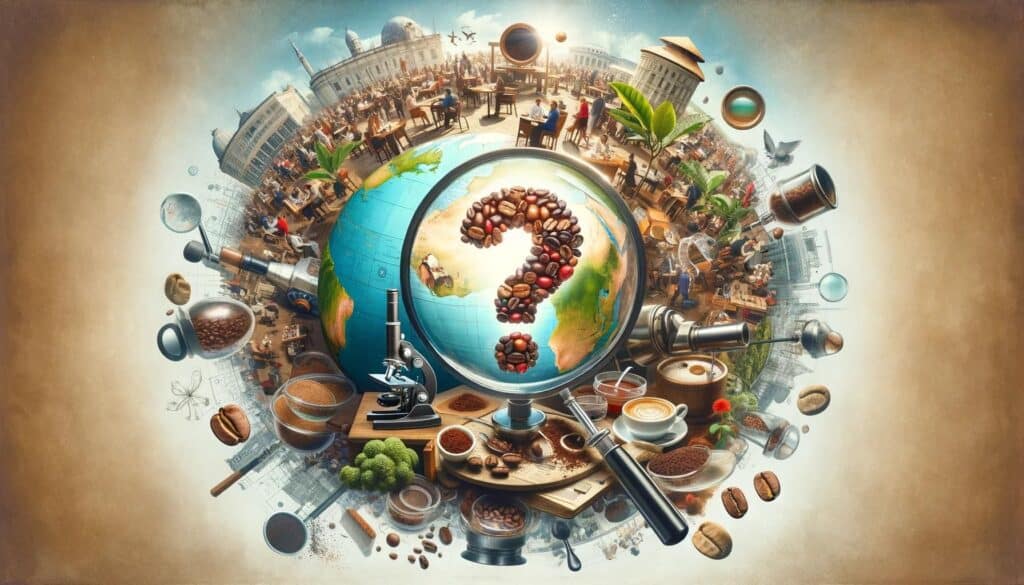
Coffee’s journey from a humble seed to a global cultural phenomenon is a story of transformation and adaptation. Its significance extends far beyond its role as a morning pick-me-up, touching on social interactions, economies, and the very fabric of cultures around the world.
Coffee’s Role in Social Interactions, Economy, and Culture
Social Interactions: Coffee plays a central role in facilitating social interaction across many cultures. From the traditional coffee ceremonies in Ethiopia, where coffee is prepared and served in a ritual that strengthens community bonds, to the Italian espresso bars where people gather for quick shots of coffee and conversation, coffee acts as a social lubricant, encouraging dialogue and camaraderie.
Economy: Economically, coffee is a powerhouse. It is one of the world’s most traded commodities, with millions of people involved in its cultivation, processing, shipping, and sale. For many countries, particularly those in the “Coffee Belt” around the equator, coffee exports are a crucial part of the economy, providing livelihoods for farmers and workers involved in its production.
Culture: Culturally, coffee has inspired a rich tapestry of traditions and practices. It has its own culture, known as “coffee culture,” characterized by cafés, coffeehouses, and a deep appreciation for the art of coffee making and consumption. This culture varies significantly from one country to another, reflecting local customs, tastes, and social norms.
The Evolution of Coffee Consumption: From Traditional Methods to Modern Coffee Culture
The way people consume coffee has evolved significantly over the centuries. Initially, coffee was consumed for its stimulating effects, often in religious or ceremonial contexts. As it spread around the world, it adapted to fit local tastes and social practices. The 17th-century European coffeehouse was a place of intellectual exchange, while in America, the 20th century saw the rise of diners and later, specialty coffee shops focusing on the quality and origin of the bean.
The 21st century has witnessed the proliferation of third-wave coffee, a movement that emphasizes direct trade, single-origin beans, and artisanal methods of preparation. This evolution reflects a growing appreciation for the complexity and variety of coffee, as well as a desire for greater ethical and environmental responsibility in its production and consumption.
The Impact of Coffee on Art, Literature, and Daily Life
Coffee has left its mark on art and literature, serving as a muse for artists, writers, and musicians. It has been celebrated in paintings, poems, novels, and songs, often symbolizing reflection, creativity, and the passage of time. Coffee’s influence extends to daily life in its ability to foster productivity, creativity, and a moment of pause in our fast-paced world.
In literature, coffee often appears as a motif representing sociability, solitude, or the pleasures of simple daily rituals. In art, it has been depicted in still lifes, café scenes, and as part of the narrative in genre paintings, reflecting its role in social and private spheres.
The significance of coffee in global culture cannot be overstated. It is a drink that transcends its humble origins, embedding itself in the social fabric, economy, and cultural identity of nations worldwide. Coffee’s ability to adapt and evolve with societies ensures its enduring presence and influence, making it a true global cultural icon.
Conclusion
Discovering how coffee goes from a tropical cherry to a key part of rituals around the world tells an amazing story that makes us rethink what we know about this favorite drink. Coffee isn’t really a bean in the scientific way because, unlike legumes, its seeds come from the fruit of the Coffea plant, not a pod. But this fact hasn’t changed how much we love to call it a “coffee bean.”
Getting to know where our coffee comes from does more than just satisfy our curiosity—it connects us closer to our planet. For coffee lovers, this knowledge adds a special story to every cup, telling us about where it’s from, the environmental conditions there, and the hard work people put into growing it. It shows us how important nature is, how complicated the business of trading coffee can be, and how our daily habits are part of bigger cultural traditions. It also makes us think more about how our choices affect the environment and society.
Sticking with the name “coffee bean,” even though it’s not botanically correct, shows just how strong culture and language are in shaping what we experience. It reminds us that the things we value most often come from our traditions, the way we see the world, and our shared experiences as humans. The term “coffee bean” has become more than just a name; it captures the deep, rich world of coffee culture.
To wrap it up, coffee’s story encourages us to look past simple names and categories, inviting us to appreciate the complex journey that brings this incredible drink from farms to our cups. As we enjoy our coffee, let’s think about the path the “bean” has traveled and celebrate the worldwide mix of culture, science, and tradition it stands for.
Reference
National Coffee Association. (n.d.). What is coffee? National Coffee Association USA. Retrieved from https://www.ncausa.org/About-Coffee/What-is-Coffee



